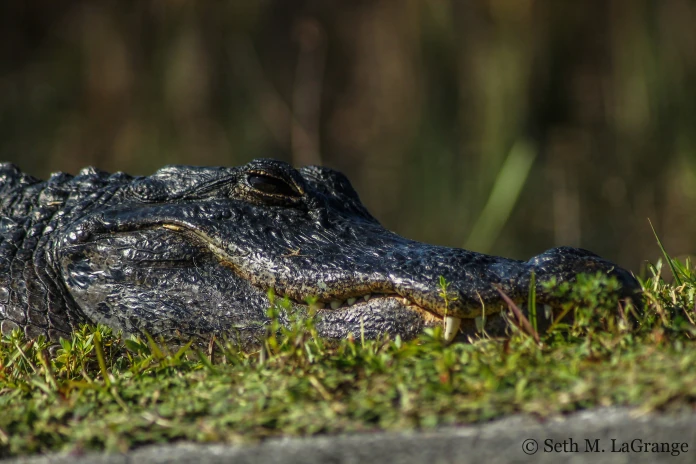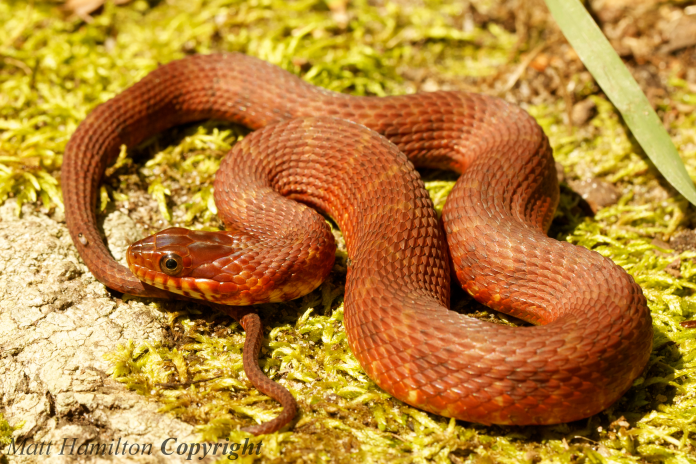I am a big advocate for conservation and the need to save the world’s threatened and endangered species. All species for that matter. When I talk to people about saving animals and living sustainably I am always confronted with one question. Why? Why should we save animals? Why do we need to save rainforests? Why do we care if one species goes extinct? And the “whys?” go on and on. When I explain these “whys” many people can understand to a degree and go “Oh that makes sense” but when we get to the subject of reptiles most have a hard time of it. They just don’t understand why a reptile could be important and especially why reptiles are important to themselves in particular. In this post I am going to try to explain to the best of my ability and knowledge why we need reptiles in this world. Feel free to comment with questions, concerns, and what reasons you may have for or against the conservation of reptiles.
Niche
In ecology, a niche is the role of an organism in the ecosystem within which it lives. We recognize two aspects of a niche. The first is an organism’s fundamental niche which is defined as the range of environmental conditions in which a particular species can survive. Essentially, the fundamental niche is every possible place a specific species could live. The second aspect of niche is the realized niche which is define as the area in which a species actually exists. The realized niche is caused by interactions with other organisms and other biotic constraints that do not allow a species to fill its entire fundamental niche. The realized niche is the role within an ecosystem for which that particular species is most suited to fill.
Just like every other organism on earth, reptiles play an important role in the ecosystems within which they exist. Some are predators, some are prey, and some are both. Some reptiles perform important ecosystems services and act as keystone species. Keystone species facilitate the existence of many other species in their respective ecosystems. Some examples are as follows:
American Alligators (Alligator mississippiensis):
Alligators create “gator holes” which in the hot months of summer tend to be the only areas left that have standing water. As you all know, water is essential for all organisms on earth. In the dry seasons water can become very scarce so these “gator holes” provide a refuge for many fish, turtles, and other aquatic organisms as well as a drinking hole for terrestrial life such as birds and mammals. Alligators facilitate the survival of organisms within such ecosystems.
Gopher tortoises (Gopherus polyphemus):
Gopher tortoises get their name from the deep burrows they dig much like that of a gopher. These burrows can be quite large reaching lengths of 5 meters long and 2 meters deep. These burrows provide the gopher with a refuge from wildfires, extreme heat, the winter cold, and predators. The awesome thing about gopher tortoises though, is they share these burrows with up to 350 (maybe even more) different species including burrowing owls, numerous rodents, rabbits, opossums, venomous and nonvenomous snakes, many amphibians, and pretty much anything else that needs a place to hide. The habitat that these tortoises provide is irreplaceable but sadly, like many reptilians, gopher tortoises are in decline and the ecosystem services that they provide will disappear with them if they cannot be saved.
These are only two species but two of the most well-known for providing ecosystem services.
Medicine
I will move of away from reptiles in their environment and bring things a little closer to home. One thing that I think we can all agree on is that medicine is very important. Advances in medicine have increased our quality of life as well as our life expectancy. Most medicine in part is derived from something that was found in nature. Reptiles interestingly enough provide some very useful medicine mainly through their venom. I would bet that most people have used medicine derived from reptile venom (primarily from snakes) and didn’t even know it.
The two broad classes of snake venoms are hemotoxic venom and neurotoxic venom. Hemotoxins primarily effect the blood and mechanisms associated with blood such as the ability of the blood to clot. Hemotoxins usually contain a necrotizing component as well which cause the death of tissues. Neurotoxins primarily effect the nervous system as their name suggests and many times can cause temporary or permanent paralysis. As you can imagine hemotoxins are usually used to treat ailments pertaining to the blood. The first medicine derived from venom was made from a protein in the hemotoxin produced by a Brazilian pit viper and was used to treat hypertension (high blood pressure). If you have ever heard of an ACE inhibitor then you have heard of this protein. In the 1970’s scientists were able to produce a synthetic version of this protein that is now used in many different blood pressure medicines. Just in case you didn’t get it, this discovery was VERY important.
Other drugs created from venoms include eptifibatide and tirofiban both of which are used to treat minor heart attacks and chest pain. They do so by dissolving blood clots. Similarly, new drugs are being tested to help treat strokes by dissolving blood clots. Southern copperhead venom contains a protein called contortrostatin that has been shown to suppress cancer growth by binding to tumors disallowing them from spreading. Human trials are probably a ways off but there is much hope surrounding this discovery.
So far I have been talking about snake venoms but I don’t want to forget about lizards. Exenatide is a diabetes medications that was synthesized from Gila monster (Heloderma suspectum) saliva. This drug helps to sustain glucose levels and increase weight loss which is a common factor in controlling type 2 diabetes.
Many more medicines exist and are in the works and if you would like to learn more about them you can visit The World Toxin Bank. Also, check out the Facebook group The Venom Interviews where experts in the field discuss the latest news and research pertaining to venom.
Aesthetics
Now most people probably think I am crazy when I say that reptiles are in fact beautiful and contribute to what humans find so aesthetically pleasing about nature. When most people think of reptiles they think of slimy, scaly, ugly creatures but what most people don’t realize is that many reptiles are actually quite colorful, ornately patterned and adorned, and spectacular to look at. Some examples are as follows:
Red Milk Snake (Lampropeltus triangulum syspila)
Eastern Box Turtle (Terrapene carolina)
Banded Watersnake (Nerodia fasciata)
Big Headed Anole (Anolis capito)
Malaysian Blue Coral Snake (Calliophus bivirgatus)
Diamondback Terrapin (Malaclemys terrapin)
Panther chameleon (Furcifer pardalis)West African Green Mamba (Dendroaspis viridis)
Burmese Starred Tortoise (Geochelone platynota)
Fan Throated Lizard (Sitana ponticeriana)
Green Bush Viper (Atheris squamigera)
Peninsular Rock Agama (Psammophilus dorsalis)
This is an extremely short list which could go on and on and please note that that if you click on the names it will take you to a google search as unfortunately I personally don’t have photos of many of these amazing reptiles. Feel free to comment and post other beautiful reptiles.
Economic Importance
It is very hard to place an economic value on reptiles outside of the pet trade mainly because the services they provide are behind the scenes and can only be calculated after reptiles have been extirpated from an area. However, reptiles can be very important when it comes to pest control. Many lizards help in controlling insects that can destroy crops and can be quite annoying to humans such as mosquitos. Snakes may provide the biggest service by controlling rodent populations. It has been shown that after the disappearance of certain snake species from an area rodent populations explode. These elevated populations of rodents can have devastating effects on crops and not to mention the carry some very nasty diseases that can be passed to humans. Personally, I’d rather have one big rat snake hanging around my house than an entire community of mice. So there, reptiles help reduce and control other annoying animal species that people don’t seem to like much. Considering how often you run into mosquitos and other insects and rodents while reptiles are present just think of how awful it would be if reptiles disappeared. We’d be up to our elbows in mouse poop and our heads would be one big mosquito bite. I’ll take the reptiles.
This is a small attempt at explaining the need to save our reptilian species. I welcome and encourage any opinions (for or against) that people may have on this matter.







